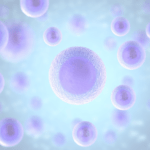Stem cell therapy is an exciting new innovation in the medical world, offering people struggling with joint pain from rotator cuff injuries, shoulder arthritis and similar joint-related conditions relief from their symptoms while avoiding the risks of invasive surgical procedures. If you’re curious about alternatives to surgery for your joint problems, it’s important to know how stem cell therapy works and what to expect from this kind of treatment.
 Stem cells are unique cells found in the human body that have the ability to transform into different types of cells. Stem cells can become brain tissue, muscle tissue, and even have the ability to repair some damaged cells. Stem cells exist in two different categories:
Stem cells are unique cells found in the human body that have the ability to transform into different types of cells. Stem cells can become brain tissue, muscle tissue, and even have the ability to repair some damaged cells. Stem cells exist in two different categories:
Most adult stem cells typically only transform into one type of cell. For example, an adult stem cell found in the liver will likely only transform into more liver cells. However, adult stem cells can be reprogrammed into pluripotent stem cells so they may transform into different types of cells.
Stem cell therapy is a branch of regenerative medicine, or the field of medicine that focuses on using the human body’s own naturally occurring cells and other materials to heal certain medical conditions. In our modern stem cell therapy procedures, the treatment team extracts a patient’s stem cells from bone marrow and then implant those stem cells into the target area for treatment. For example, if the patient suffers from shoulder arthritis, the treatment team will implant the stem cells into the shoulder joint.
After implantation, the patient may experience soreness at the stem cell extraction site for a few days to a few weeks, and the targeted area may feel stiff and sore for about the same amount of time. However, after the initial recovery phase most patients who undergo stem cell therapy experience greater relief that continues to expand for several months. Stem cells will continue to work and can repair damaged tissues at the injection site for up to one year.
Stem cell therapy is a noninvasive alternative to surgery for many joint-related health issues. If you have struggled with symptoms of shoulder arthritis, a rotator cuff injury, or any other similar joint-related medical issue, stem cell therapy can provide relief while allowing you to avoid the risks of surgery, which has been the traditional accepted treatment path for most of these conditions.
Surgery is a complex process that typically entails a long and painful recovery period followed by physical therapy and additional treatments. Stem cell therapy by comparison involves a much shorter and easier recovery time with far lower risk of adverse side effects. Most patients who undergo stem cell therapy start feeling relief from their original symptoms within the first month after treatment. If you have dealt with shoulder arthritis or sustained a serious rotator cuff injury recently, consider the benefits of stem cell therapy and investigate this promising new alternative to surgery. Consult with a doctor to learn more about the benefits and cost of stem cell therapy.
IMPORTANT! This information is for educational purposes only and is NOT intended to replace the care or advice given by your physician. Boston Applied Biologics is not offering regenerative cell therapy or other regenerative therapies as a cure for any condition, disease, or injury. No statements or implied treatments on this website have been evaluated or approved by the FDA. This website contains no medical advice. All statements and opinions provided by this website are provided for educational and informational purposes only and we do not diagnose or treat via this website or via telephone. We do not claim that any applications, or potential applications, using autologous regenerative cells and other regenerative cells are approved by the FDA, or are even effective. We do not claim that these treatments work for any listed nor unlisted condition, intended or implied. Always seek the advice of your physician or other qualified health provider before starting any new treatment or with any questions you may have regarding a medical condition. For more information see our Medical Disclaimer.
Copyright © 2025 Boston Applied Biologics, LLC. All Rights Reserved.

How Orthobiologic Therapy can relieve your joint, muscle and tendon pain without surgery so that you can get back to enjoying your life*
We are committed to your privacy. Boston Applied Biologics uses the information you provide us to contact you about relevant content, products, and services. By providing us with your information you are consenting to the collection and use of your information in accordance with our Terms of Service and Privacy Policy. You may unsubscribe from these communications at any time.